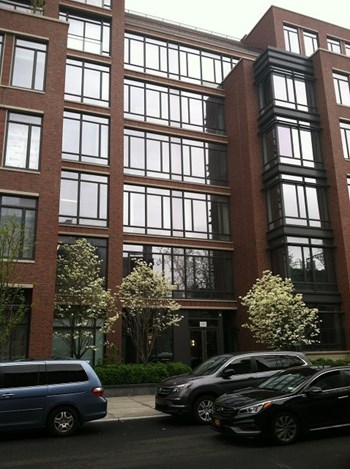
In New York City, the real estate game is hard fought and won by aggressive players. Everyone wants a piece, from developers to buyers. So when space -- a rarity in the crowded metropolis -- becomes available, it gets used.
Interestingly, as hospitals and medical facilities close or are consolidated, the structures are often being used to develop new condominium residences. In some cases, the location makes the sites ideal for residential development and in others, the grand and unique qualities of the structures, which are often older and historic, dictates their new use.
Alex Maroni is a broker with Douglas Elliman handling the sales for the River Park project in Brooklyn's Cobble Hill neighborhood, where sales just launched--the result of converting what was once Long Island College Hospital into residences.
“This is one of the largest high-end residential projects we’ve worked with,” he says of River Park. “It is essentially right on the waterfront ... connecting Cobble Hill, Dumbo and Brooklyn Heights.”
Beyond the location, Maroni said part of the appeal was the historic aspect of the development, in particular the Polhemus Building, built in 1897, which was converted from medical uses to 17 condominiums.
“It’s an historic architecturally amazing building, a grand beautiful building in its own right,” he says.
The conversion of hospitals into residential housing echoes the trend that has also been taking place across the city with former houses of worship. When The Cooperator reported on church to condo conversions last August, we found that the unique design aspects and the locations of the churches were part of the appeal.
“Churches tend to be in prominent locations,” says Nadia Meratla, senior vice president of design and development for Douglas Elliman Development Marketing. “Be it either a corner site or a pretty publicly accessible location. They tend to occupy prime real estate in general. And I think people are drawn not only to the location, but the aesthetic of getting something that is a little less conventional that has intriguing spatial character and affords a bit of a special product.”
And like churches that have been transformed into luxury housing, the conversions of hospitals for residential purposes have attracted media attention and in some instances controversy--The New York Times recently reported on the River Park development as well as the tensions involving the project developer Fortis Property Group and neighborhood residents.
Here are some of other hospital-to-condo conversions in the Big Apple.
The Greenwich Lane (West Village)
Before: St. Vincent’s Hospital
After: Condominium residences, townhouses
Perks, amenities: Large, interior gardens, LEED-certified, coveted West Village location, pool, underground parking
The story: Another project that generated community concern was the conversion of the former St. Vincent’s Hospital on Seventh Avenue. The local Community Board opposed converting the public facility into luxury, private residences, but the project, which consists of five buildings and five townhouses, all of which surround a secret, interior garden courtyard, received the approvals needed and are all but completely sold at this point. Sales began in 2013.
Gramercy Square (Gramercy Park)
Before: Cabrini Medical Center
After: Condominium residences
Amenities: Central private courtyard and walking paths, rooftop terrace, The Gramercy Club (health and fitness club with pool, golf simulator, more), wine cellar
The story: This medical facility closed in 2008. The development site, which extends from 19th to 20th streets between Second and Third avenues, includes four buildings that range in height and size. The largest is the 17-story building called The Tower.
River Park (Cobble Hill)
Before: Long Island College Hospital (LICH)
After: Condominium residences, townhouses
Perks, amenities: Cobble Hill waterfront location, harbor views, historic cred
The story: As can happen in tight-knit, predominantly low-rise communities, opposition to this project was fierce: 'No Towers! Save Cobble Hill' posters can still be spotted in the windows of pristine brownstones and townhouses on Clinton, Warren, Amity and Henry streets, among others. While the Fortis Group scrapped earlier plans to rezone and build much higher (which would have included affordable housing), how the whole development pans out remains to be seen. There are currently 17 units available now in the historic Polhemus Building, which was part of the hospital, as well as six brand new townhouses. Further down the line the project is set to include at least three new structures, including an 18-story building.
Rutherford Place (Stuyvesant Square)
Before: The New York Society of the Lying-In Hospital (maternity hospital)
After: Condominium residences
Amenities: Roof deck, cultural cache, maid service
The story: Rumor has it that when this Gramercy Park building was a maternity hospital some 60 percent of babies in New York City were born there. What’s not rumor is the high number of celebrities who lived at 205 Second Ave. According to the Daily News, they included Tom Cruise, David Lee Roth, Chris Farley, Dave Chappelle and Liv Tyler. The building was built in 1902, converted to rental apartments in the early 1980s, and 78 units went on the market as condos in 2013.
Georgia Kral is a staff writer at The Cooperator.






Leave a Comment